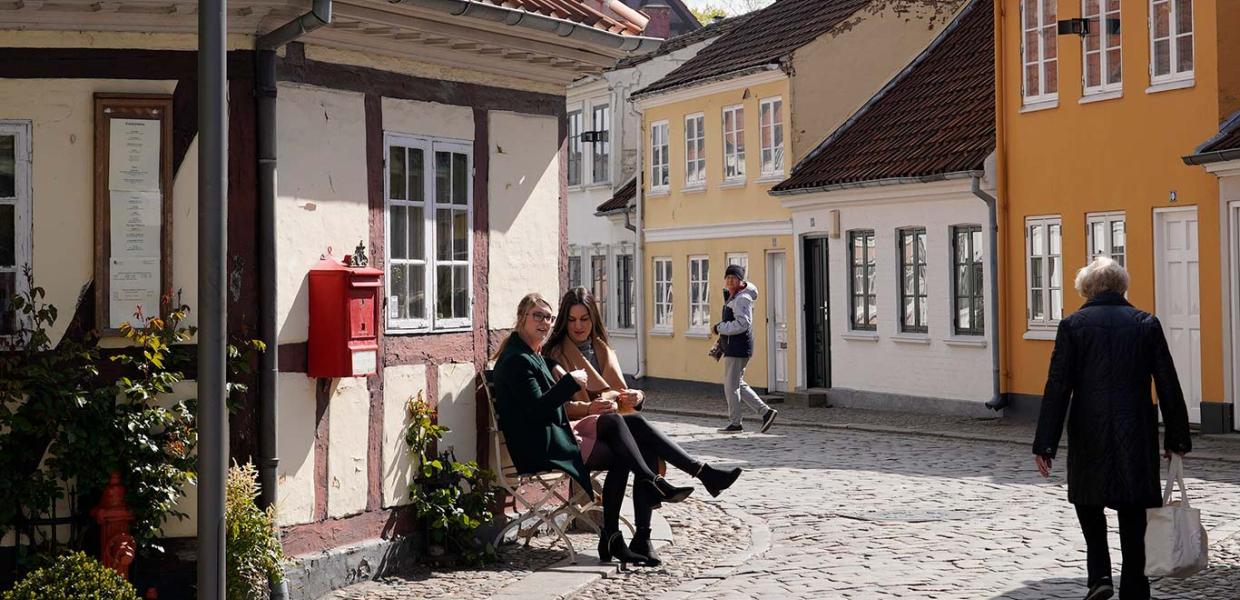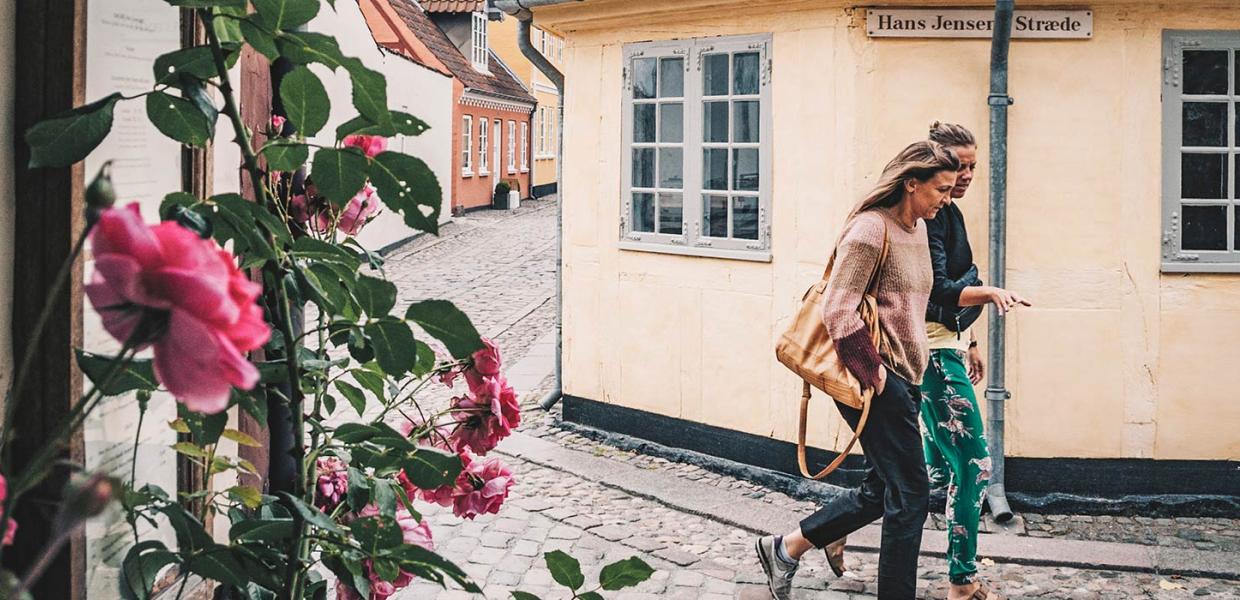Hans Christian Andersen House
Step into Hans Christian Andersen’s House in Odense – a museum attraction where fairy tales, architecture and immersive experiences come together.

Photo:Johan Joensen
What secrets does the H.C. Andersen Quarter hold?
This beautiful quarter is named the H.C. Andersen Quarter for good reason. At the corner of Bangs Boder and Hans Jensens Stræde, you’ll find H.C. Andersen’s House—a new museum that uniquely brings the author’s fairy tales to life, complemented by a public garden that enchants in every possible way. In addition to the museum, the area is home to the Funen Printmaking Workshop, the souvenir shop Klods Hans, and a large mural featuring a portrait of H.C. Andersen.
Which streets make up the H.C. Andersen Quarter?
The H.C. Andersen Quarter encompasses several charming narrow streets and hidden nooks, all centrally located in Odense's city centre. The quarter includes Bangs Boder, Rosengade, Ramsherred, and Overstræde. Rosengade, once known as Nygade, was formerly referred to as ‘Shame Street’ due to the presence of prostitutes. Today, however, it is a picturesque avenue with roses climbing the house facades, leading to the Rose Garden, which forms part of the new Carl Nielsen Quarter.
The Colourful, Small Houses
Most of the houses on Bangs Boder are small, often colourful, single-storey buildings. These were constructed in the 16th century, around the time of the Reformation in Denmark. Originally, these modest homes were built for the poorer sections of the population, with small and sparsely furnished apartments. Today, however, the quarter has shed its humble reputation. The houses now fetch high prices, marking the area as a desirable and expensive neighbourhood.

Photo:Johan Joensen